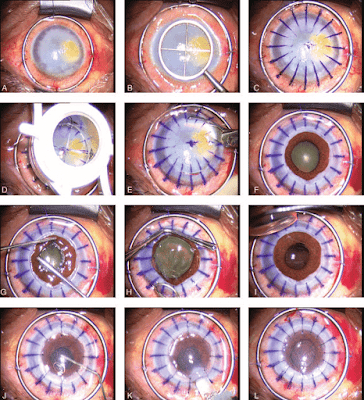Rings in ophthalmology
1-Ring Keratitis: The hallmark of Acanthamoeba keratitis.
2-Kayser-Fleischer’s ring: Wilson’s disease
3-Corneal rust ring:
A small, reddish brown, circular opacity remained in the cornea after the removal of an iron foreign body.4-Coats’ white ring:
Remnants of a foreign body. The remnants are fine iron deposits in the cornea.5-Fleischer’s ring:
Visible all around the base of cone in Keratoconus
6-Pseudo-Fleischer’s ring:
Iron deposition can be seen in Hyperopia LASIK correction
7-Soemmering’s ring:
Early opacification of lens capsule after cataract extraction
8-Vossius’ ring:
Iris Pigment on anterior lens capsule in concussion injury to eye
9-Weiss ring:
Epipapillary glial tissue torn from the optic disc in Posterior vitreous detachment (PVD)
10-Double ring sign:
With the peripheral margin of the encircling ring corresponding to the border of a normal-sized optic disc. Seen in Hypoplasia of the Optic Disc.
11- Golden Ring :
A golden ring within the lens is evidence of successful delineation.
12-Intrastromal Corneal Ring Segments (ICRS):
are implanted in the deep corneal stroma to modify the corneal curvature. Used in keratoconus,PMD.
13-Capsular tension rings (CTRs) :
were used for zonular reinforcement in eyes with a weak zonular apparatus, such as in pseudoexfoliation and Marfan's syndrome, and when zonular rupture or dehiscence occurs after blunt or surgical trauma.
14-Flieringa ring:
A stainless steel ring sutured to the sclera to support the globe during difficult eye operations. used usually in corneal transplant surgeries
15-Wessely immune ring:
refers to the formation of a ring-shaped infiltrate in the corneal stroma that arises from a type 3 immune response involving antigen-antibody complex formation.




































